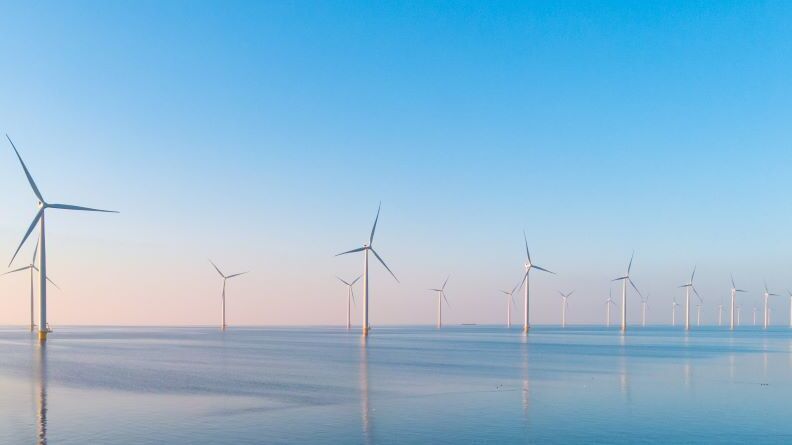
State-owned enterprises and climate-conscious investing
There is no net zero without net-zero SOEs, so what approach should investors take when engaging with these often mega businesses?
According to research from the International Finance Corporation (IFC), state-owned enterprises (SOEs) account for 20% of investment, 5% of employment and up to 40% of domestic output in countries around the world, underlining how critical these operations are in any widespread shift to net-zero investing.
In some instances, SOEs can include economically viable decarbonisation projects in their budgeting, leading to results such as the Sweden government-owned rail transport firm Green Cargo, which had its green finance framework rated “excellent” by second-party opinion providers Cicero.
SOEs can also show apparently little impetus to deliver on such targets, as seen with Aramco, the primarily state-owned Saudi Arabian Oil Company. Aramco does not meet any of the ten targets for climate disclosure set by the ClimateAction 100+ initiative, establishing no clear short-term, mid-term or long-term emission-reduction goals according to the NGO.
So what can climate-conscious investors achieve in this context? Rebecca Greenberg, research analyst on Lazard Asset Management’s ESG and sustainable investing team, says: “Good environmental policy, coupled with evidence of action, could help spur private sector investment in SOEs, make them more attractive investment cases, and eventually lower their cost of capital.
“Engagement with government and SOEs is another important tool that both equity and fixed-income investors could utilise to influence issuer behaviour.”
ESG considerations
When investing in an SOE, there may have to be an appreciation of not only the policies of the company itself, but also the nation backing it. For Greenberg, investors should take note of the relevant government’s willingness and ability to create or change regulations that could have a direct impact on company performance and investor returns.
An example is China, where, as of 2020, SOEs made up 40% of the nation’s national economic output. When investing in a firm such as the Fortune 500 listed China Everbright Group, an ESG-conscious investor must ask themselves if they are content to analyse purely the policies of the firm, or if they should widen the analysis to the government itself, one that is accused of failings ranging from human rights abuses to a laggard approach to Paris Agreement commitments.
Piers Hugh-Smith, an investment stewardship manager at Franklin Templeton, says: “State-owned enterprises may need a different set of engagement priorities, given the levels of influence available to public market investors and the dual role these firms represent. They must not only fulfil their mission in terms of shareholder returns, but they may also have an additional role to play – benefitting their state-owner through societal value.
“This purpose may not be within the influence of management and hence outside the sphere of control of minority shareholders.”
State-owned enterprises may need a different set of engagement priorities, given the levels of influence available to public market investors and the dual role these firms represent.
State influence
A key consideration when it comes to SOEs in this context must then be the willingness of the government of a country to directly intervene in the activities of a business owned by the nation itself. Combined with carbon considerations, such investments can be a tricky notion for a net-zero investor (according to the OECD, over 70% of oil and gas production assets, 60% of coal mines and the majority of global power generation capacities are state owned).
In 2020, Malaysian oil and gas giant Petronas was downgraded (along with the nation itself) from stable to negative by S&P Global Ratings, as accusations were made that the state had directly intervened in the removal of the company’s CEO.
“Considering the relationship between a government and an SOE issuer has always been an important part of investing in SOEs. Fixed-income investors should focus a great bit of detail on the bond documentation and the protections for SOE cash flow that could be impacted from government intervention. Investors should then determine whether these risks are adequately priced into the securities”, says Greenberg.
Emerging economies and SOEs
Investment in state-owned enterprises is often intertwined with investment in emerging markets, where many SOEs are based, with the role of the state as an economic actor in these nations only expected to grow following the Covid-19 pandemic. Additionally, some of the largest airlines, urban transit and metro systems remain under state or municipal ownership in emerging economies.
However, emerging economies often carry with them a poor track record on climate, as evidenced by the coal plants acting as SOEs across China, India and Vietnam.
Hugh-Smith points to more positive developments such as the African Carbon Market Initiative, the first project of its kind targeting $1.5bn a year of voluntary carbon offsets by 2050 from the private sector.
“At the recent COP27 conference in Egypt, the exposure emerging market economies have to the physical effects of climate change was clear. The public and private sectors need to work in partnership to deliver adaptations and solutions that are able to not only prevent climate change but work on solution-led investing that allows carbon removals and adaptation.
“Emerging markets are critical areas for this work, and the private capital markets have an ability to leverage their material influence to drive the transition where it is needed most,” he says.



